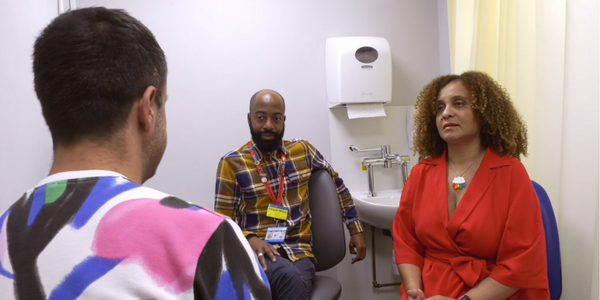DoxyPEP: antibiotics to prevent STIs

Draft guidelines in the US now support using antibiotics to prevent sexually transmitted infections (STIs) such as syphilis, chlamydia, and gonorrhoea. The US is likely to be the first country to recommend the strategy, and their recommendations will probably influence doctors in other parts of the world.
The approach involves taking a single dose of an antibiotic pill called doxycycline soon after sex. Doctors describe the strategy as ‘post-exposure prophylaxis’, so it’s called ‘doxyPEP’.
Doxycycline prevents bacteria from reproducing and is widely used to treat pneumonia, gum disease, skin infections, and some STIs. Doxycycline is also used to prevent malaria infection. Doctors don’t think that other antibiotics will work as well as doxycycline to prevent STIs.
The draft guidelines say that one 200mg doxycycline pill should be taken within 72 hours of oral, anal, or vaginal sex. They recommend doxyPEP for gay and bisexual men who have had gonorrhoea, chlamydia, or syphilis in the past year. Similarly, it is recommended for transgender women who have had one of those STIs in the past year too.
This is based on three well-conducted studies which showed the effectiveness of doxyPEP for gay and bisexual men. One of the studies included many people living with HIV and also showed that doxyPEP worked for transgender women too.
However, doxyPEP is not recommended for other people, as studies haven’t been done in most other groups. One study with cisgender women in Kenya had disappointing results.
“It is clear that in the face of rising STI rates, our current tools are not sufficiently effective, so I welcome the introduction of a new tool that is,” sexual health and HIV clinician Dr Laura Waters of the Mortimer Market Centre in London commented. But, she also said that doctors need to monitor whether the increasing use of the antibiotic leads to more bacteria which are resistant to it.
Vacancy at NAM: HIV Information Editor

We are currently recruiting for an HIV Information Editor to join the NAM team.
The HIV Information Editor will work with the Managing Editor to ensure NAM aidsmap’s HIV information resources remain up to date, accessible and accurate. The role will include developing, monitoring and updating aidsmap’s About HIV pages and printed materials, as well as providing information in other media formats and on other platforms, such as video and social media.
The closing date for applications is 10am on Monday 13 November.
Dutch man controls HIV for 23 years without treatment

There is a rare group of people with HIV who stop HIV treatment and then maintain undetectable or low HIV viral loads. While HIV is still present in their bodies, these individuals have unusual immune responses which keep the virus under control.
These rare individuals are called ‘post-treatment controllers’. It’s recently been announced that a Dutch man has been off antiretroviral treatment for 23 years, after an initial two years of treatment. This may be the longest period of post-treatment control ever documented.
The man was first diagnosed with HIV in 1998, at the age of 49. He had a high viral load and symptoms that are typical of people who have very recently acquired HIV (swollen lymph nodes, headache, and fever). He started HIV treatment within two weeks – this seems to be important in helping people achieve post-treatment control.
He stopped treatment after two years but continued with his medical appointments and had regular blood tests. Extraordinarily, he has maintained an undetectable status ever since, except for a single test result of 400 copies a few months after stopping treatment.
People who control HIV after stopping treatment appear to have different immune responses to HIV when compared to other people. In this man’s case, his CD8 immune cells had a very strong response to HIV’s coating protein. This coating protein is essential for the virus to infect new cells. As well as this, his CD8 cells had a very high rate of proliferation, meaning they could multiply very quickly to meet the body’s demand in the fight against the virus.
While this case is very unusual, a focus of HIV cure research involves finding out how this man and others manage to control their HIV. The aim is to develop treatment strategies which might help more people do the same thing.
How to spot the symptoms of mpox

In our new video, aidsmap's Susan Cole speaks to Dwayne-Wilson Hunt, charge nurse in sexual health & HIV at the John Hunter Sexual Health Clinic; and to Harun Tulunay, sexual health and HIV activist who had mpox in 2022, about how to spot the symptoms of mpox.
HIV statistics for England

The latest snapshot of HIV in England has been published, giving figures for the year 2022. That year saw the highest ever uptake of HIV testing among gay and bisexual men, with diagnoses in this group continuing to fall. Over 190,000 men took a test, a 23% increase from before the COVID-19 lockdowns. There were 724 new HIV diagnoses in gay and bisexual men. The fall in diagnoses was particularly large in White gay and bisexual men, with less progress for gay and bisexual men who are not White.
New HIV diagnoses in heterosexual men fell very slightly (to 411), while they increased in heterosexual women (to 564). Testing levels in heterosexual men and women are still below the levels seen before COVID-19.
The above figures are on brand new HIV diagnoses, made for the first time in England. The total number of HIV diagnoses rose in 2022, but much of the increase was due to an increase in the number of people with HIV previously diagnosed abroad and subsequently diagnosed again in England. Encouragingly, most of these individuals were rapidly linked to care, with 91% receiving care within one month of diagnosis. Moreover, 87% of them were virally suppressed at the time of their diagnosis in England.
Just over 94,000 people were living with diagnosed HIV and accessing care in 2022. Of those accessing care, 98% were taking HIV treatment and 98% of those with viral load results were virally suppressed. Half of all people with HIV accessing care in England in 2022 were aged 50 and over, compared to a decade ago when they made up just over a quarter.
HIV in the UK – then and now

We have published a new page which provides a historical overview of major trends in the HIV and AIDS epidemics in the UK from the 1980s to 2020. It provides five-year snapshots of key statistics and developments that affected HIV diagnosis, treatment and prevention.
Editors' picks from other sources
Young HIV advocates stand up to fake news and stigma | UNICEF
Too many people feel shame taking antiretroviral therapy (ART), especially young men. Ruele is a young Kenyan advocate who takes his ART in public to help normalise the idea of taking medication.
What HIV does to your brain – and how ARVs halt that | Bhekisisa
Left untreated, an HIV infection can cause inflammation in someone’s brain and lead to mental health problems. But antiretrovirals can stop it from happening.
Scotland: First TV ad on HIV since ‘tombstones’ 40 years ago set to tackle attitudes stuck in the 1980s | Terrence Higgins Trust
The first major new TV advert on HIV to air in Scotland since the UK Government’s ‘Don’t Die of Ignorance’ campaign featuring falling tombstones 40 years ago launched on STV last night (16 October).
Author and activist Mark S. King reflects on living with ‘my fabulous disease' in new book | TheBody
The essays in My Fabulous Disease are a funny, self-aware, and sometimes self-deprecating look at one person’s life before, during, and after a personal and population-wide catastrophe – the decades of the AIDS pandemic.
